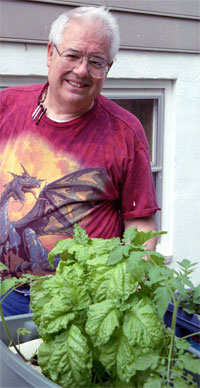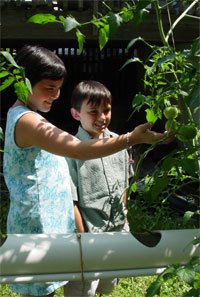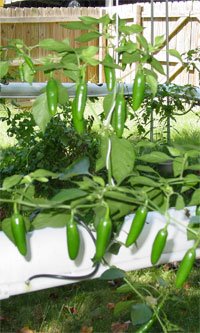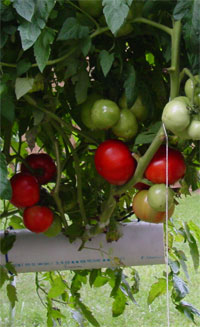
Here's a little extract from my article "Summer 7 The Year the Star Fell" about nutrient.
---
The nutrient is just a mixture of simple salts. I use a formulation based on the early 1960's work of Abram Steiner in Europe. It is a very well balanced solution for growing tomatoes and works fairly well for a wide variety of other plants. I've personally grown basil, several varieties of lettuce, bok choy, cucumbers, peppers, especially jalapeno peppers, tomatoes and as a lark I've grown some egg plant, squash, and corn all with this nutrient. In addition to being very efficient in the use of water and fertilizer ( hydroponics is also weedless and more critter-less than most growing methods.
---
I personally use Total-Gro 8-5-16 Hydroponic Special Steiner Formula compounded by SDT Industries Inc. of Winnsboro, LA. They have a great Grower's Guide to Plant Nutrition in a pdf file on-line. The Steiner 8-5-16 is on page 39. This is great stuff.
It comes as a two part mix. I take the mix and mix two concentrates, blue and white named for their color. The concentrate is a pound of each mixed into a gallon of water. Then to make working strength nutrient, mix an ounce of concentrate (an ounce of blue and an ounce of white) per gallon of target solution. You will want to use a conductivity meter to get the strength exactly where you want it — but that's a good starting position for tomatoes, cucumbers and peppers. Lettuce and basil want to run very much weaker.
Unless you want to compound your own, that's about as much as you need to know about nutrient. If you want to maximize yield and quality for a specific crop you'll want to look for taylored nutrients perhaps, but Steiner is a great all around nutrient, especially for getting started.


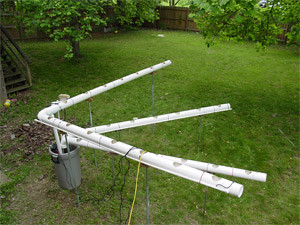
 So here's the example. It's shown while it was being built. The frame is just PVC with flat channels. The trash cans (one of them) will be used as a nutrient tank (water + nutrients) with a pump in it which pump the nutrient to the ends of the channels. You can see the main feed tube (black) that feeds a PVC pipe and each of the channels if fed by a little 1/4 inch tube from the PVC pipe. The nutrient rums through the channels by gravity and is collected by the return and runs back into the tank. This little circulation goes on all the time.
So here's the example. It's shown while it was being built. The frame is just PVC with flat channels. The trash cans (one of them) will be used as a nutrient tank (water + nutrients) with a pump in it which pump the nutrient to the ends of the channels. You can see the main feed tube (black) that feeds a PVC pipe and each of the channels if fed by a little 1/4 inch tube from the PVC pipe. The nutrient rums through the channels by gravity and is collected by the return and runs back into the tank. This little circulation goes on all the time.


